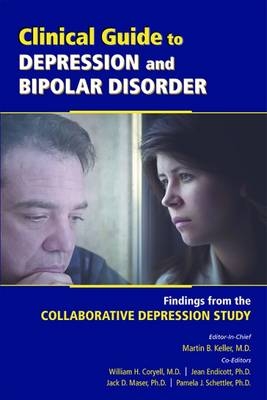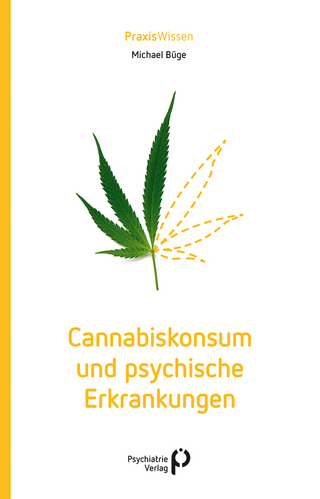
Clinical Guide to Depression and Bipolar Disorder
American Psychiatric Association Publishing (Verlag)
978-1-58562-433-1 (ISBN)
Conceived in the early 1970s to study the phenomenology, diagnosis, genetics, and clinical course of depression, the NIMH Collaborative Depression Study (CDS) has influenced research and practice since its inception. Clinical Guide to Depression and Bipolar Disorder: Findings From the Collaborative Depression Study summarizes key findings from the study and the related literature to provide comprehensive and up-to-date knowledge on the course and outcome of illness in mood disorders. Nowhere else can clinicians find such detailed longitudinal data, combined with astute clinical analysis of the current research. The volume offers:
• Historical background on how psychodynamic psychiatry was overtaken by psychobiological perspectives, and the challenges and controversies that gave rise to the CDS, providing the context necessary to understand the profession's development to the present day.
• A wealth of information on nosology, natural history, phenomenology, and treatment response in depressive and bipolar disorders.
• Detailed descriptions of the study methods employed, providing information and insights that will assist researchers in the longitudinal design of prospective cohort studies.
• Comprehensive review of outcomes in mood disorder, including delineation of the long-term course of bipolar I, bipolar II, and unipolar major depressive disorders, the implications of which will continue to be instrumental in the development of psychiatric nosology and indispensable to clinicians engaged in assessment and treatment.
• Critical information clinicians need in order to read the clinical signs in their patients and predict the "switch" from unipolar to bipolar disorder.
• A fascinating review of the evolution of diagnostic thinking about the role of anxiety in mood disorders, and the contributions of the CDS to the newly published DSM-5.
Each chapter is accompanied by a time-saving summary, as well as a section on clinical implications that translates the findings into practical points and key recommendations clinicians need to know to provide optimal care. Psychiatrists, clinical psychologists, residents, and fellows will turn to Clinical Guide to Depression and Bipolar Disorder: Findings From the Collaborative Depression Study to better understand the course and outcome of their patients' mood disorders and, ultimately, to improve their clinical skills.
Martin B. Keller, M.D., is Professor in the Department of Psychiatry and Human Behavior at Alpert Medical School, Brown University; and Chief Academic Strategic Planning and Director of the Mood and Anxiety Disorders Research Program at Butler Hospital in Providence, Rhode Island. William H. Coryell, M.D., is Professor in the Department of Psychiatry at the University of Iowa, Carver College of Medicine in Iowa City, Iowa. Jean Endicott, Ph.D., is Professor of Clinical Psychology in the Department of Psychiatry at College of Physicians and Surgeons, Columbia University; and Director of the Division of Clinical Phenomenology at the New York State Psychiatric Institute in New York, New York. Jack D. Maser, Ph.D., is Adjunct Professor in the Department of Psychiatry at the University of California, San Diego, in La Jolla, California. Pamela J. Schettler, Ph.D., is Principal Statistician in the Department of Psychiatry at the University of California, San Diego, in La Jolla, California; and Senior Research Associate in the Department of Psychiatry and Behavioral Sciences at the Emory University School of Medicine in Atlanta, Georgia.
Contributors
Dedication
Chapter 1. Introduction
Chapter 2. Collaborative Depression Study Procedures and Study Design
Chapter 3. Dimensional Symptomatic Structure of the Long-Term Course of Unipolar Major Depressive Disorder
Chapter 4. Dimensional Symptomatic Structure of the Long-Term Course of Bipolar I and Bipolar II Disorders
Chapter 5. Risk Factors for Suicide Attempts and Completions
Chapter 6. Psychotic Features in Major Depressive and Manic Episodes
Chapter 7. Development of Mania or Hypomania in the Course of Unipolar Major Depression
Chapter 8. Comorbidity of Affective and Substance Use Disorders
Chapter 9. Treatment Effectiveness and Safety in the Longitudinal Course of Mood Disorders
Chapter 10. Personality and Mood Disorders
Chapter 11. Family History and Genetic Studies in Mood Disorders
Chapter 12. Clinical Course and Outcome of Unipolar Major Depression
Chapter 13. Predictors of Course and Outcome of Bipolar Disorder
Chapter 14. Undertreatment of Major Depression
Chapter 15. Impact of Anxiety Severity on Mood Disorders
Chapter 16. Contributions of the NIMH Collaborative Depression Study to DSM-5
Index
| Erscheint lt. Verlag | 9.6.2013 |
|---|---|
| Zusatzinfo | 12 Line drawings, black and white; 25 Tables, unspecified |
| Verlagsort | VA |
| Sprache | englisch |
| Maße | 152 x 229 mm |
| Gewicht | 390 g |
| Themenwelt | Medizin / Pharmazie ► Medizinische Fachgebiete ► Psychiatrie / Psychotherapie |
| ISBN-10 | 1-58562-433-0 / 1585624330 |
| ISBN-13 | 978-1-58562-433-1 / 9781585624331 |
| Zustand | Neuware |
| Haben Sie eine Frage zum Produkt? |
aus dem Bereich


